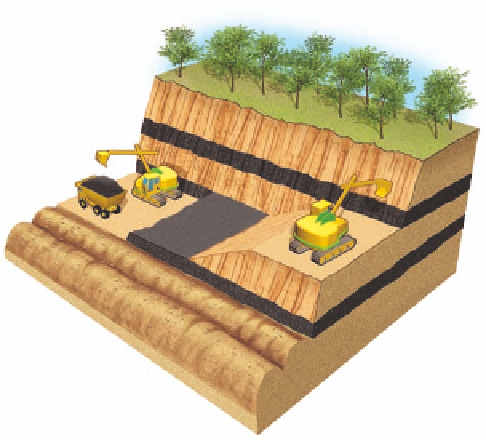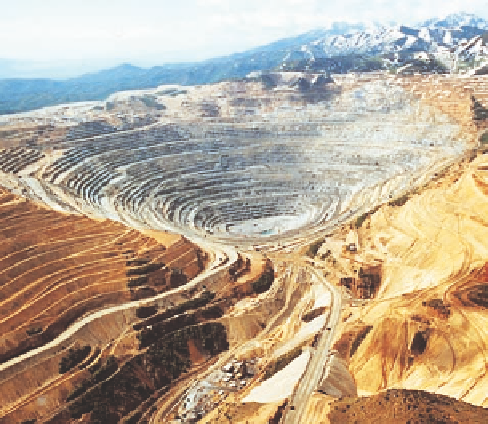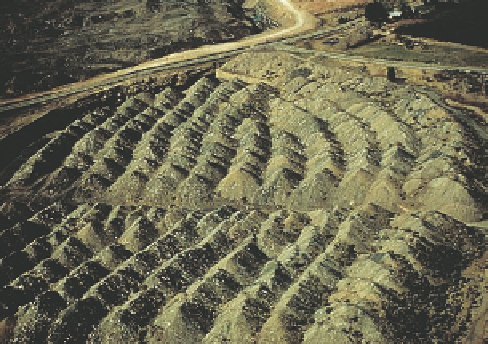Environmental Engineering Reference
In-Depth Information
are removed by
surface mining,
and deep deposits are
removed by
subsurface mining.
In surface mining, mechanized equipment strips
away the
overburden
of soil and rock and usually dis-
cards it as waste material called
spoils.
Surface mining
extracts about 90% of the nonfuel mineral and rock re-
sources and 60% of the coal (by weight) that are used
in the United States.
The type of surface mining used depends on two
factors: the resource being sought and the local topog-
raphy. In
open-pit mining
(Figure 12-8), machines dig
holes and remove ores (such as iron and copper), sand,
gravel, and stone (such as limestone and marble).
Area strip mining
may be used where the terrain
is fairly flat. A gigantic earthmover strips away the
overburden, and a power shovel digs a cut to remove
the mineral deposit. The trench is filled with overbur-
den, and a new cut is made parallel to the previous
one. This process is repeated over the entire site. If
filling the trench does not restore the land, area strip
mining leaves a wavy series of highly erodible hills of
rubble called
spoil banks
(Figure 12-9).
Contour strip mining
(Figure 12-10) is used on
hilly or mountainous terrain. A power shovel cuts a
series of terraces into the side of a hill. An earthmover
removes the overburden, a power shovel extracts the
coal, and the overburden from each new terrace is
dumped onto the one below. Unless the land is re-
stored, a wall of dirt is left in front of a highly erodible
bank of soil and rock called a
highwall.
Another surface mining method is
mountaintop
removal
(Figure 12-11, p. 278). Explosives, massive
shovels, and huge machinery called draglines remove
the top of a mountain and expose seams of coal under-
neath. The resulting waste rock and dirt are pushed
Figure 12-9
Natural capital degradation:
banks of waste or
spoil created by unrestored
area strip mining
of coal on a
mostly flat area near Mulla, Colorado. Newly strip-mined areas
in the United States must now be restored, but many previously
mined sites have not been restored.
Undisturbed land
Overburden
Pit
Bench
C
o
a
l
s
e
a
m
Spoil banks
Figure 12-10
Natural capital degradation:
contour strip
mining
of coal used in hilly or mountainous terrain.
into the nearest streams and valleys below. This form
of mining—increasingly used in the U.S. state of West
Virginia—causes considerable environmental damage.
Subsurface mining
removes coal and metal ores that
are too deep to be extracted by surface mining. Miners
dig a deep vertical shaft, blast subsurface tunnels and
chambers to reach the deposit, and use machinery to
remove the ore or coal and transport it to the surface.
Subsurface mining disturbs less than one-tenth as
much land as surface mining and usually produces
less waste material. However, it leaves much of the re-
source in the ground and is more dangerous and
expensive than surface mining. Hazards include cave-
ins, explosions, and diseases (such as black lung)
caused by prolonged inhalation of mining dust.
Figure 12-8
Natural capital degradation:
this
open-pit
copper mine in Bingham, Utah, is the largest human-made hole
in the world.
